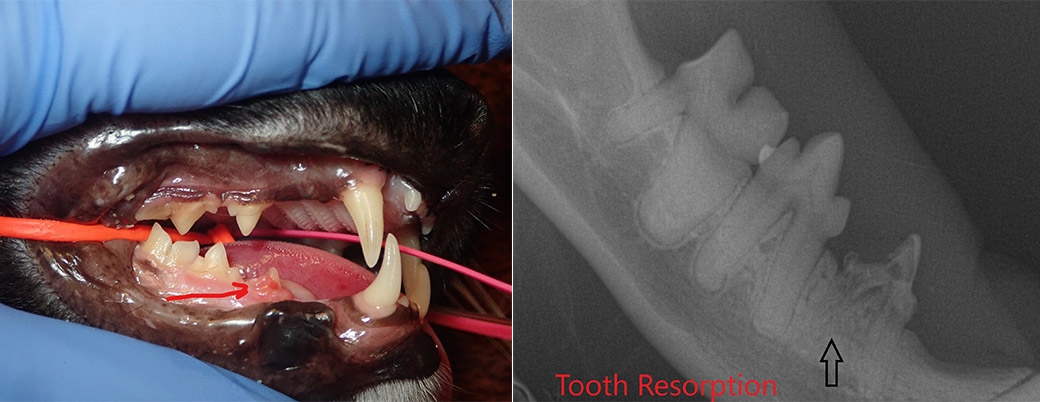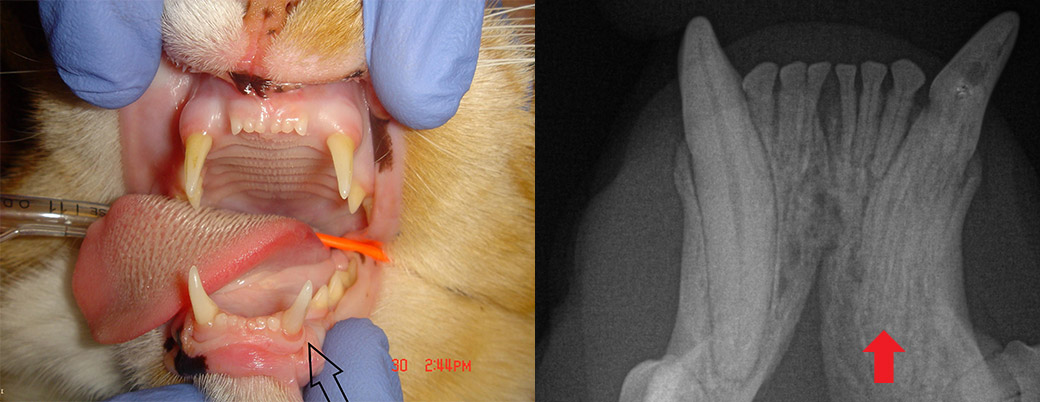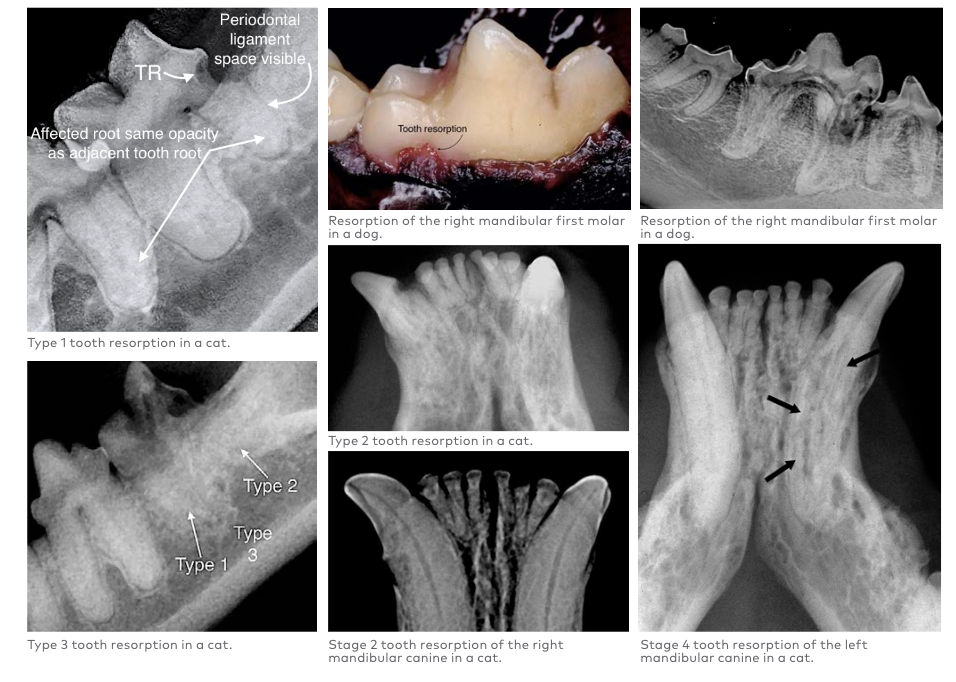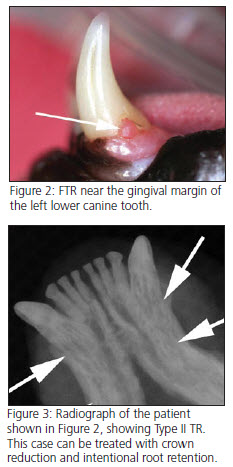tooth resorption cats stages
Supporting joint health as dogs and cats age. Stage one includes mild cases where only the enamel has begun to erode.

Domestic Feline Oral And Dental Diseases Veterian Key
The radiograph shows advanced type 2 tooth resorption affecting both lower canine teeth.

. By Dersak Posted on October 20 2021 September 20 2021. Tooth resorption of cats is a very commonly found problem when performing a good oral examination or dental prophylaxis. If you see this its likely a sign of teeth resorption.
Stage 1 lesions affect the cementum or cementum and enamel but have not yet progressed into the dentin. Stage 4c - diagram illustration cats Vetlexicon Felis from Vetlexicon Definitive Veterinary Intelligence. In the photo above there is soft tissue creeping up the crown of the lower left canine tooth and this almost always indicates a resorptive lesion of some sort.
Veterinarians evaluate each tooth to determine the type and stage of each lesion. 3 dental radiographs are required for proper diagnosis and treatmentfeline tooth resorption tr a common disease in cats characterized by resorption of. This will look like a little red patch on their gums.
Pattern of development of tooth resorption was symmetrical in most cats Risk of having tooth resorption increased with increasing age Cats with clinically missing teeth were more likely to have tooth resorption Neutering sex age at neutering and mean whole mouth gingivitis index did not affect the prevalence of tooth resorption Clinical manifestation. With Type 2 tooth resorption a technique known as crown amputation with intentional root retention is appropriate. When resorption progresses into the pulp chamber nerve stage 3 has occurred.
Mild dental hard tissue loss cementum or cementum and enamel. Lobprise Classification of Tooth Resorption Stage I TR 1. The lesion is usually minimally sensitive because it has not entered the dentin.
Cat Tooth Resorption Stages. One of the most obvious signs of teeth resorption in cats is a red area of gingivitis on one or two of your cats teeth. Stages of Tooth Resorption in Cats.
Tooth resorption can be difficult to detect with cats often masking signs of oral discomfort or pain. With Type 1 tooth resorption both the crown and root need to be extracted. There are five stages of tooth resorption that progress from a small amount of tissue loss to severe tissue loss that extends into the tooth until only remnants of dental tissue remain.
Moderate dental hard tissue loss cementum or cementum and enamel with loss of dentin that dose not extend to the pulp cavity. In stage 3 the deterioration penetrates the dentin to the pulp. In stage 4 large amounts of the tooths hard structure have been.
Until recently we have overlooked this dental problem as veterinarians. Some radiographic evidence is detectable such as a change in the dentin. Stage 4a Crown and root are equally affected.
Look for red localized areas of gingivitis. Five stages of tooth resorption are recognized in cats. Feline tooth resorption may be clearly visible.
Your veterinarian will obtain intraoral radiographs to assess the type of resorption. 2 tooth resorption also affects dogs to a lesser extent. Tooth resorption ranges from stage 1 to stage 5 with stage 1 being the least amount of discomfort to stage 3 and 4 being the most painful and having the most destruction of the tooth.
What Are the Stages of Tooth Resorption in Cats. 12 risk factors include increasing age and the presence of other dental disease including additional tr lesions. In stage 2 the lesion penetrates enamel and dentin.
Feline tooth resorption progresses through several stages. Treatment is guided by the radiographic appearance of the tooth resorption. In stages 1 and 2 of the disorder lesions resembling cavities form on the enamel and work their way into the cementum layer of the tooth.
Only 8 of the teeth examined from cats without tooth resorption. Stage 2 lesions affect the dentin but have not yet progressed into the pulp cavity. There are five recognized stages of tooth resorption.
Moderate loss of dental hard tissue cementum or cementum and enamel with loss of dentin that does not extend to the pulp cavity. Initially in stage 1 only an enamel defect is noted. Resorption loss of periodontal ligament and ankylosis.
Stage 4c - diagram illustration relating to dogs including description information related content and more. In stage three tooth resorption the tooth is deeply impacted. Stage 2 TR 2.
AVDC Description of Tooth Resorption Stages Stage 1. Tooth resorption may not be apparent other than locallized gingival inflammation. Most of the tooth has lost its integrity.
This has been because the lesions are often hard to visualize and also because we didnt realize what we were seeing. Mild loss of dental hard tissue cementum or cementum and enamel Stage 2. Stage 4b Crown is more severely affected than the root.
Dental radiographs are needed for a. Diagnosis of tooth resorption in cats. Severe Stage 4-5 of 5 tooth resorption.
Stage 1 resorption presents with only mild clinical evidence of hard tissue loss and is rarely detected especially if the lesion is hidden behind soft tissue. Stage one is the earliest stage of damage. Stage 4 Extensive dental hard tissue loss cementum or cementum and enamel with loss of dentin that extends to the pulp cavity.
Tooth resorption is characterized by severity stage and radiographic appearance type. It is apparent that these teeth are fragile and subject to fracture. The lesions are small and close to the base of the.
In stage 5 most of the tooth has been destroyed leaving only a. Routine radiography is required for timely diagnosis as clinical visual and tactile methods only detect late-stage lesions - that is when they become evident in the crown. TR tooth resorption Authors Jan Bellows Consulting Editor Heidi B.
Stage two includes moderate instances in which parts of the cementum and dentin are being reabsorbed. Tooth resorption can appear as a hole in the tooth. Feline tooth resorption usually has five stages.
Stage 4c Root is more severely affected than the crown. External Tooth Resorption In Cats Part 2 Therapeutic Approaches Today S Veterinary Practice By Demonstrating which of the two methods tested here is more effective can have a major impact on clinical practices when designing and proposing clinical protocols for the management of diabetes. In stage 4 this deterioration causes the tooth to weaken and break up.

Feline Tooth Resorption Dental Disease In Cats
Tooth Resorption In Dogs And Cats Vetbloom Blog

Feline Dental Disease Tooth Resorption In Cat Wellnessvet

Feline Tooth Resorption Today S Veterinary Practice

Artstation Feline Tooth Resorption

External Tooth Resorption In Cats Part 2 Therapeutic Approaches Today S Veterinary Practice

Feline Tooth Resorption Aztec Animal Clinic

External Tooth Resorption In Cats Part 2 Therapeutic Approaches Today S Veterinary Practice

Dental Trivia For Cats Broad Ripple Animal Clinic

External Tooth Resorption In Cats Part 2 Therapeutic Approaches Today S Veterinary Practice

Resorptive Lesions Feline Healthy Paws Animal Hospital
Tooth Resorption In Dogs And Cats Vetbloom Blog
Tooth Resorption In Dogs And Cats Vetbloom Blog

Feline Tooth Resorption Dental Disease In Cats

Classifying Tooth Resorption In Cats And Dogs Dvm360

Feline Tooth Resorption Montana Pet Dentistry Oral Surgery